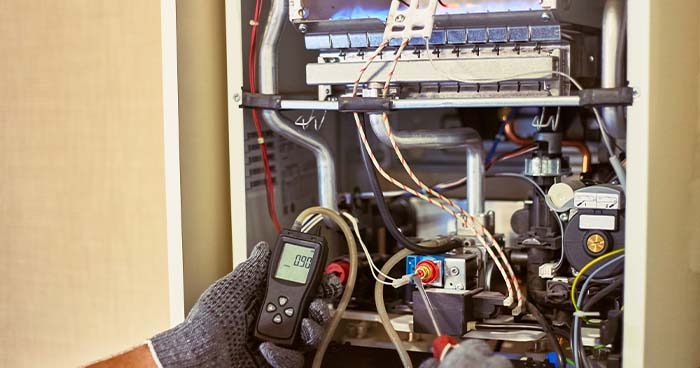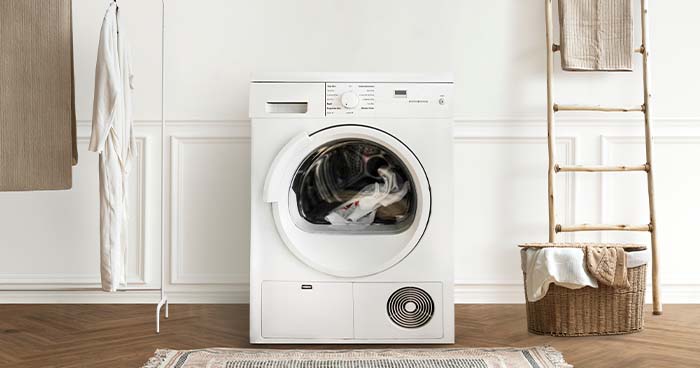
Fall and winter are the coziest times of the year, but they can also be the most expensive. Staying warm and running your home can cost more in the colder months. But you don’t have to sit and shiver. Follow our top tips for saving energy and enjoy these ways to save on your electric bill this fall and winter.
Keep the Curtains Open During the Day to let in Natural Light
Natural sunlight can heat a room, even if it’s chilly outside. Opening your curtains and letting in light warms your rooms without cranking up the thermostat.

Closing curtains tightly in the evenings also helps prevent heat from escaping. Thermal curtains are efficient at keeping the warm air in your home (and also keeping your home cool in summer).
Save on Electric Bills by Investing in a Smart Thermostat
A smart thermostat connects wirelessly with your home’s HVAC system and allows you to control it from your phone or tablet — even when you aren’t at home. It can learn your preferences over time and adjust itself accordingly, so it only uses as much energy as necessary to keep you comfortable at any given moment.
Try to Limit the Use of Electricity During Peak Hours
If you’re trying to save money on your electric bill or even reduce your carbon footprint, use your household appliances during off-peak hours.
Off-peak hours are times when electricity companies charge less for using power because there is more supply than demand.
Add Area Rugs to Hardwood or Concrete Floors
If you have a hard time keeping your feet warm in the winter, consider adding rugs to your flooring. The more contact area between the rug and flooring surface, the better it will insulate from heat loss through conduction (i.e., direct contact).
Choose thick rugs as they provide more insulation. And don’t be afraid to experiment with different colors to brighten your home during the dark winter months.
Wear Extra Layers to Stay Warm
Layer up! It’s the perfect way to save money on your heating bills. In addition, you’ll look stylish and stay warm. Layer up with a thin long sleeve shirt under a sweater or if you’re feeling more casual, try wearing a hoodie under a fleece.

Change Your Air Filters Regularly
A dirty air filter reduces the efficiency of your heating system. In fact, a clogged filter can cause your furnace to run longer and work harder than it should, increasing your energy bills. Change your air filters every three months or as recommended by the manufacturer.
Keep Your Furnace Working with Regular Maintenance
If something goes wrong with your furnace, it causes problems for your home. A faulty furnace might not work or wear down faster than normal, causing higher monthly bills and more frequent repairs. Regularly scheduled furnace maintenance helps prevent these issues, saving you money in the long run.

Turn off Phantom Loads
Phantom loads are the power drains you don’t see, but they can add up to a big chunk of your household electric bill each month. Why?
Many householders overlook phantom loads because they’re so small — but they can add up to big savings if you manage them properly.
Plug up Drafts in Windows and Where Pipes Enter the Home
Air leaks in your home are like holes in a bucket – as long as there’s a hole, you’ll never be able to fill it. It’s the same with your home. Air leaks allow warm air to escape from your home through cracks around windows, doors, and pipes.
Use the Cold Water Setting for Your Laundry
Doing laundry in cold water saves money on your utility bill because it takes less energy to heat cold water than it does warm or hot water. What’s more, it keeps your clothes looking new for longer. And by washing full loads (rather than half-loads), you’ll save on your utility bill by using less water per load.

Make Sure Your Water Heater is on the Right Setting
One of the easiest ways to save money on your electric bills is by adjusting your water heater’s temperature. Lower your water heater’s temperature to 120 degrees and see how much you save on your next electric bill.


